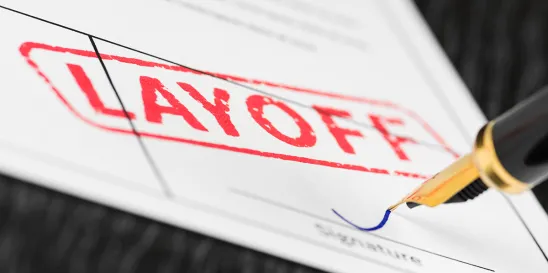Spotify announced this week, through a very public memo to its employees, its plan to layoff about 17% of its workforce. In so doing, Spotify joins a number of other technology companies that have recently announced restructuring plans on the heels of overly robust pandemic-driven hiring.
The CEO's memo was the subject of an interesting WSJ discussion regarding similar corporate communications that justify, explain and spin layoffs. Reductions in force are, sadly, a longstanding feature of employment in corporate America. Those reductions might occur in response to changing business needs, economic evolution and funding concerns, among many other reasons.
Spotify's corporate slimming (and its CEO's explanations for it) is not newsworthy in and of itself, but the article raises some interesting questions about how companies actually go about making these personnel cuts and how they can avoid them. The individuals charged with making these decisions undoubtedly face a number of difficult choices no matter the reasons. Among those decisions is whether to cut once, widely and deeply (which is painful but fleeting) or to trim in smaller doses (which may be less painful but more impactful because of the extended duration).
These choices lead to yet another interesting question: what if technology could predict inefficiencies such as overstaffing, product planning, skillsets and other important human capital needs before individuals are actually hired? What if that same technology could help manage this difficult process by providing guidance to corporate leaders about the impact of the these cuts on corporate operations in the future, which might mean a more focused and informed reduction in force?
This technology – perhaps an ideal use of AI – might be like a technological slim-down pill that can help employers avoid corporate downsizing by predicting hiring needs with laser-like precision. It seems that this would be a natural extension of AI as a predictive tool. The anxiety about AI replacing humans (and human jobs) may be real, but the flip side of its use - to ensure job preservation – could be the magic medicine to avoid the very real human harm that comes with job loss.
This is a major question that employers face in a downsizing. Is it better to do layoffs all at once or a little at a time? There’s no right answer, human-resources veterans say. A layoff that is too large means some key people or departments can be inadvertently let go. Smaller layoffs every few months create uncertainty, too, putting a workforce on edge. And there’s that word again, “rightsize.”




 />i
/>i

